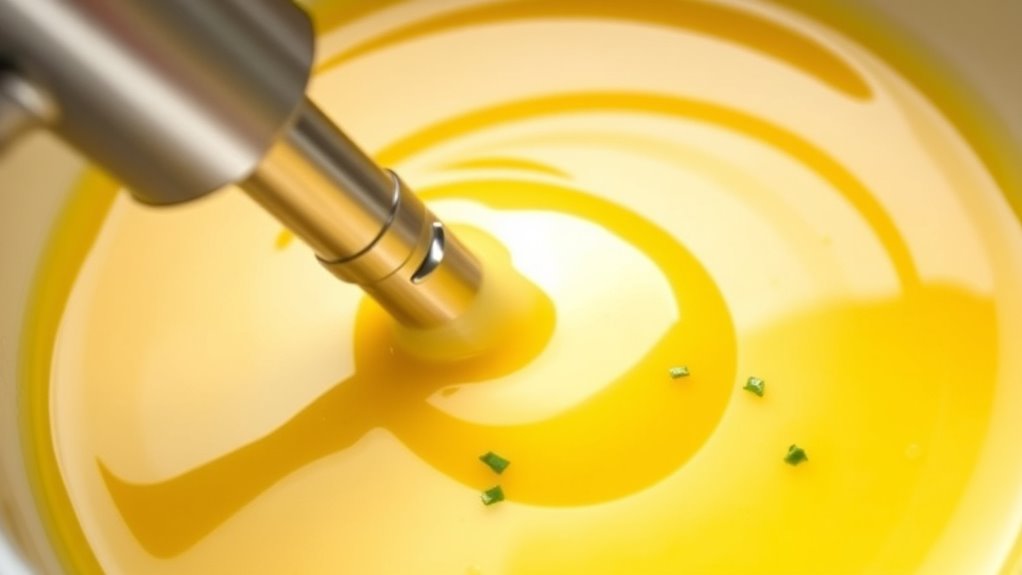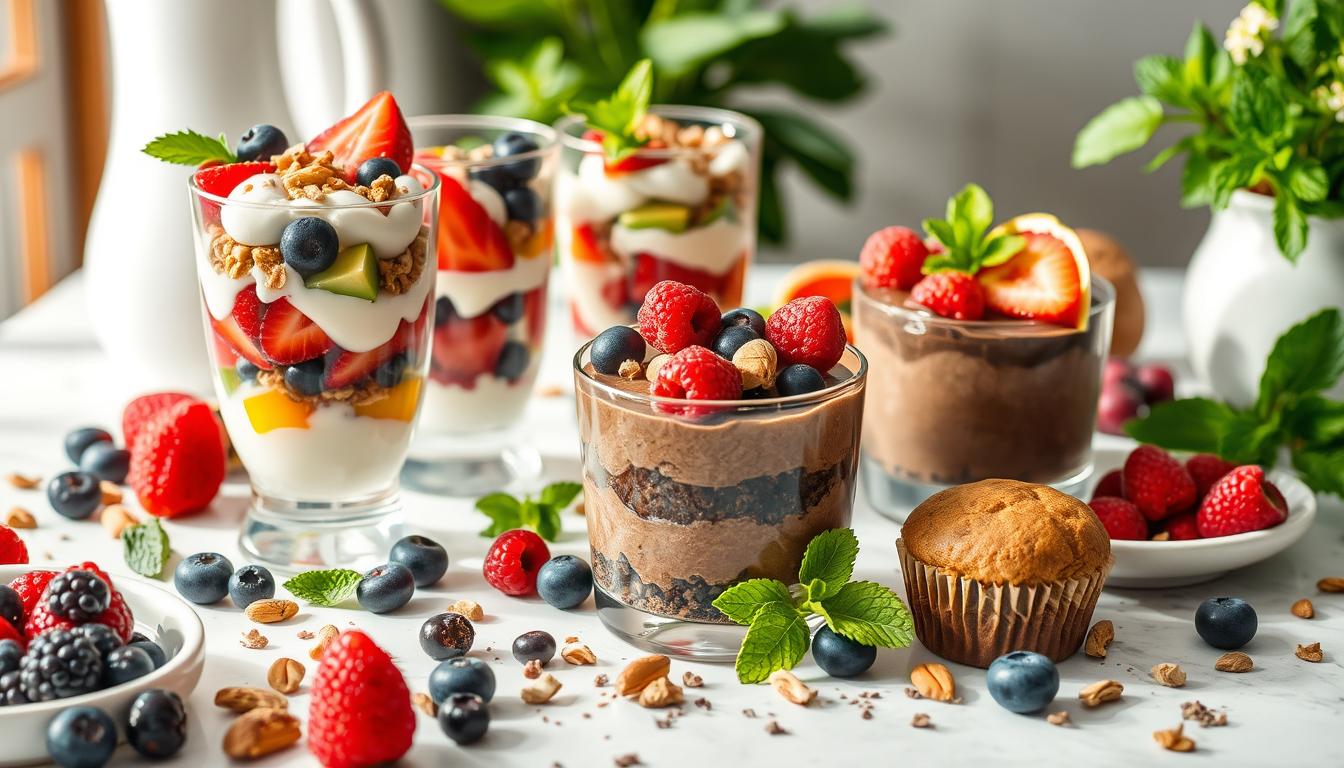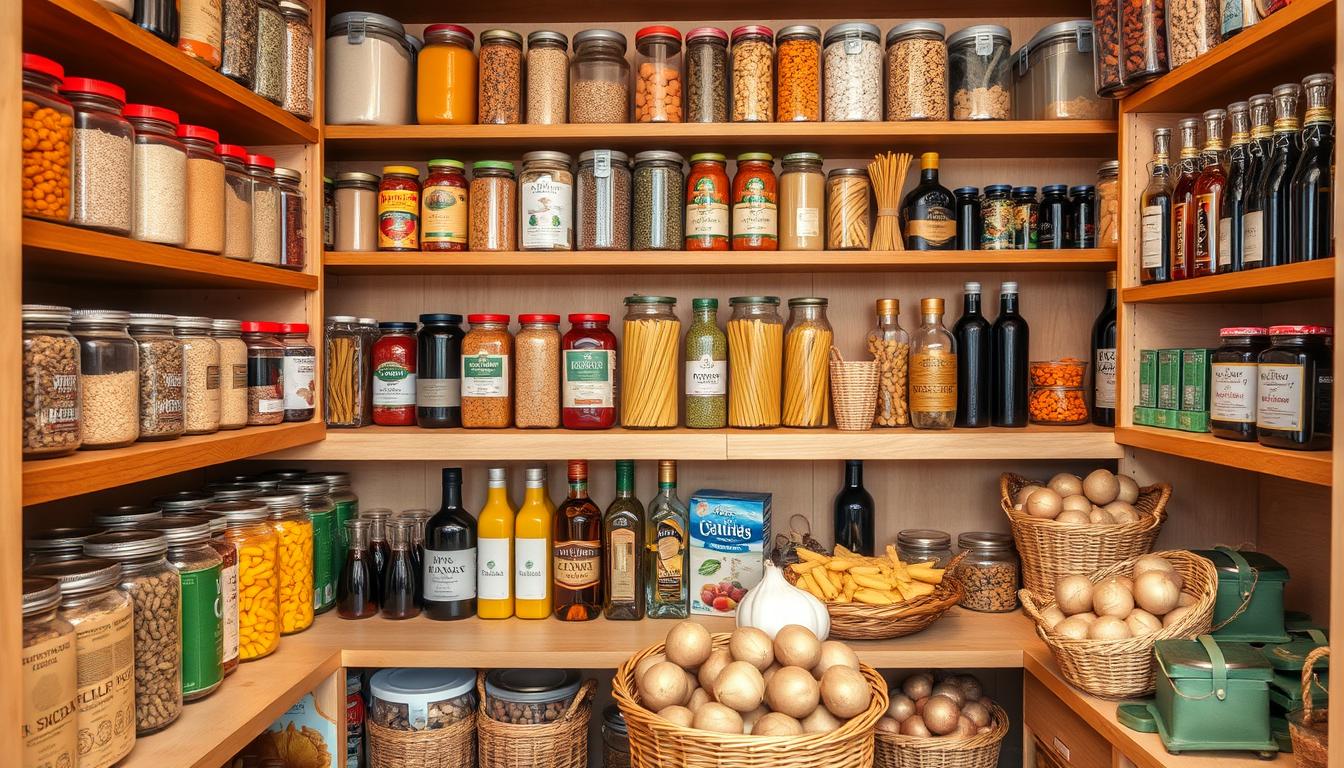Mastering Hollandaise with an immersion blender makes creating a foolproof emulsion simple and quick. Start by carefully tempering your eggs with warm liquids to prevent curdling. Then, slowly blend in melted butter while continuously mixing with the immersion blender. This technique ensures a stable, glossy sauce every time, even if cooled briefly. By mastering these steps, you’ll achieve perfect, silky Hollandaise effortlessly. Keep exploring to discover tips that elevate your sauce-making skills even more.
Key Takeaways
- Proper egg tempering prevents curdling and creates a smooth base for a stable Hollandaise sauce.
- Using an immersion blender quickly combines eggs and warm melted butter into a cohesive emulsion.
- Continuous blending while adding butter ensures a glossy, thick, and stable sauce resistant to separation.
- This method reduces risks of scrambling eggs and speeds up preparation compared to traditional whisking.
- Mastering emulsification with an immersion blender results in a foolproof, silky Hollandaise perfect for various dishes.

Hollandaise sauce is famously rich and silky, but mastering its perfect consistency can seem intimidating—until you discover how an immersion blender simplifies the process. Traditionally, making Hollandaise involves carefully tempering eggs over gentle heat, which requires patience and a steady hand to prevent curdling. However, with an immersion blender, you can achieve a smooth, stable emulsion quickly and reliably, even if you’re new to sauce-making. The key to success lies in understanding egg tempering and how it contributes to sauce stability.
Egg tempering is the process of gradually raising the temperature of raw eggs so they don’t scramble when combined with hot liquids. When making Hollandaise, you typically start by whisking egg yolks with a small amount of warm liquid—like melted butter or warm water—to gently heat the eggs and prevent them from curdling. This step is essential because it sets the stage for a stable emulsion, ensuring the sauce doesn’t break later. The immersion blender makes this process easier because it quickly incorporates the eggs and butter, creating a smooth base that’s less prone to separation.
Egg tempering gently heats eggs, preventing curdling and ensuring a smooth, stable Hollandaise.
Once your eggs are properly tempered, the immersion blender becomes your most valuable tool. You add warm melted butter gradually while blending continuously. The high-speed agitation instantly emulsifies the mixture, binding the fat and liquids into a creamy, cohesive sauce. Because the blender creates a strong, uniform emulsion, you have better sauce stability—meaning your Hollandaise won’t easily separate or break, even if it cools slightly or sits for a few minutes. This stability is what makes the sauce both foolproof and forgiving, especially when you’re managing multiple dishes or working in a busy kitchen. Incorporating the right techniques can further enhance your results.
Another advantage is that the immersion blender reduces the risk of over-heating the eggs or rushing the process. Instead of whisking vigorously over a double boiler, you simply blend until you see the sauce thicken and turn glossy. This minimizes the chances of scrambling the eggs or ending up with a lumpy, broken sauce. Plus, cleanup is straightforward—just rinse the blender attachment, and you’re done.
In addition, understanding the emulsification process and how it relates to the stability of the sauce helps improve your overall technique. In essence, the combination of egg tempering and the powerful, direct blending action of an immersion blender transforms what used to be a delicate, unpredictable task into a quick, reliable process. With a little attention to egg tempering for initial stability, you’ll find that mastering Hollandaise becomes not just achievable but enjoyable. The result is a luxurious, silky sauce ready to elevate eggs Benedict, steamed vegetables, or grilled fish—no stress, no fuss.
Frequently Asked Questions
Can I Make Hollandaise Without Egg Yolks?
You can’t make traditional hollandaise without egg yolks, but you can try egg substitutes for vegan hollandaise. Options like silken tofu, cashew cream, or avocado create a similar rich texture. These alternatives won’t provide the exact flavor but work well for a creamy, flavorful sauce. Keep in mind, vegan hollandaise won’t have the same emulsion as classic, but with the right ingredients, it’s a delicious, plant-based substitute.
How Long Does Homemade Hollandaise Stay Fresh?
Homemade hollandaise typically stays fresh for about 1 to 2 days when stored properly. Follow refrigeration guidelines by keeping it in an airtight container and promptly refrigerate after use. Be aware that its quality may decline over time, and it’s best to consume it sooner rather than later. Always check for any signs of spoilage before using leftovers, as hollandaise can spoil quickly due to its delicate ingredients.
What Are Common Mistakes When Using an Immersion Blender?
Using an immersion blender is like taming a wild stallion—if you’re not careful, it can run wild. Common mistakes include overmixing, which breaks the emulsion, and improper positioning of the blender, causing uneven blending or splatters. To avoid this, keep the blender steady and submerged just below the surface, blending slowly and steadily. That way, you’ll achieve silky hollandaise without mess or mishap.
Can I Freeze Hollandaise Sauce?
You might wonder if you can freeze hollandaise sauce, but it’s generally not recommended. Freezing tips include knowing that hollandaise tends to separate upon thawing, affecting its texture and flavor. Storage guidelines suggest keeping it in an airtight container for no more than a day or two. If you do freeze it, reheat gently and whisk vigorously to try to restore its emulsion, but be aware it may not regain perfect consistency.
Is It Safe to Consume Hollandaise Made With Raw Eggs?
You might wonder if hollandaise made with raw eggs is safe to eat. Because raw eggs can carry Salmonella, there’s a food safety concern. To reduce risks, use pasteurized eggs or heat the sauce gently to 160°F, killing bacteria without curdling the sauce. Always prioritize food safety when handling raw eggs, especially in sauces like hollandaise, to prevent foodborne illnesses.
Conclusion
Now, with your immersion blender in hand, you’ve turned a delicate sauce into a simple, foolproof masterpiece. No longer do you need to stress over stubborn emulsions or broken hollandaise. Instead, you hold the power to create a silky, luxurious sauce effortlessly. It’s a reminder that sometimes, the easiest tools bring the most impressive results—proof that sophistication doesn’t have to be complicated. So, enjoy your newfound confidence and elevate every dish with your perfect hollandaise.









